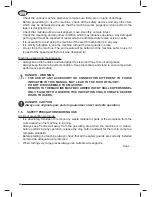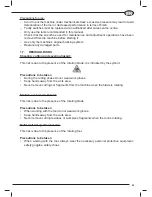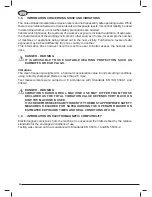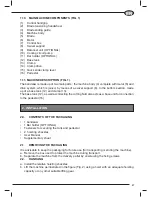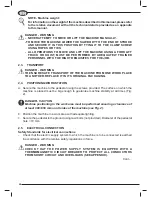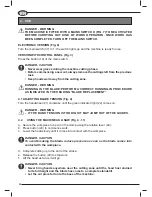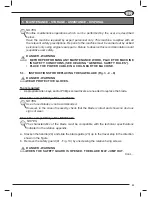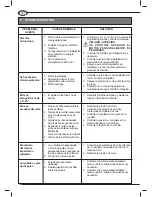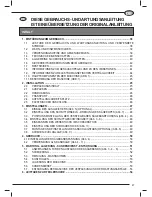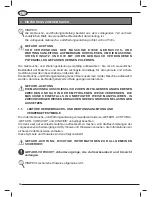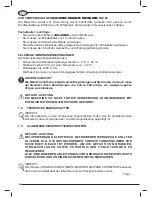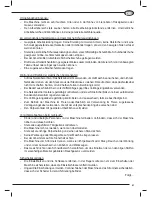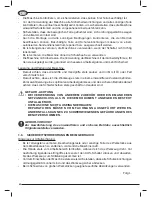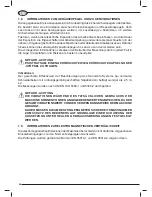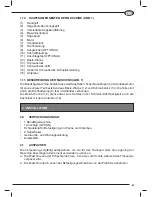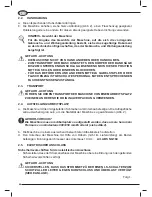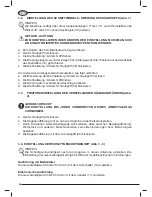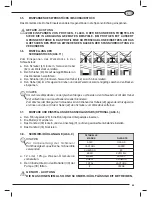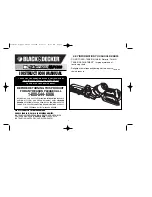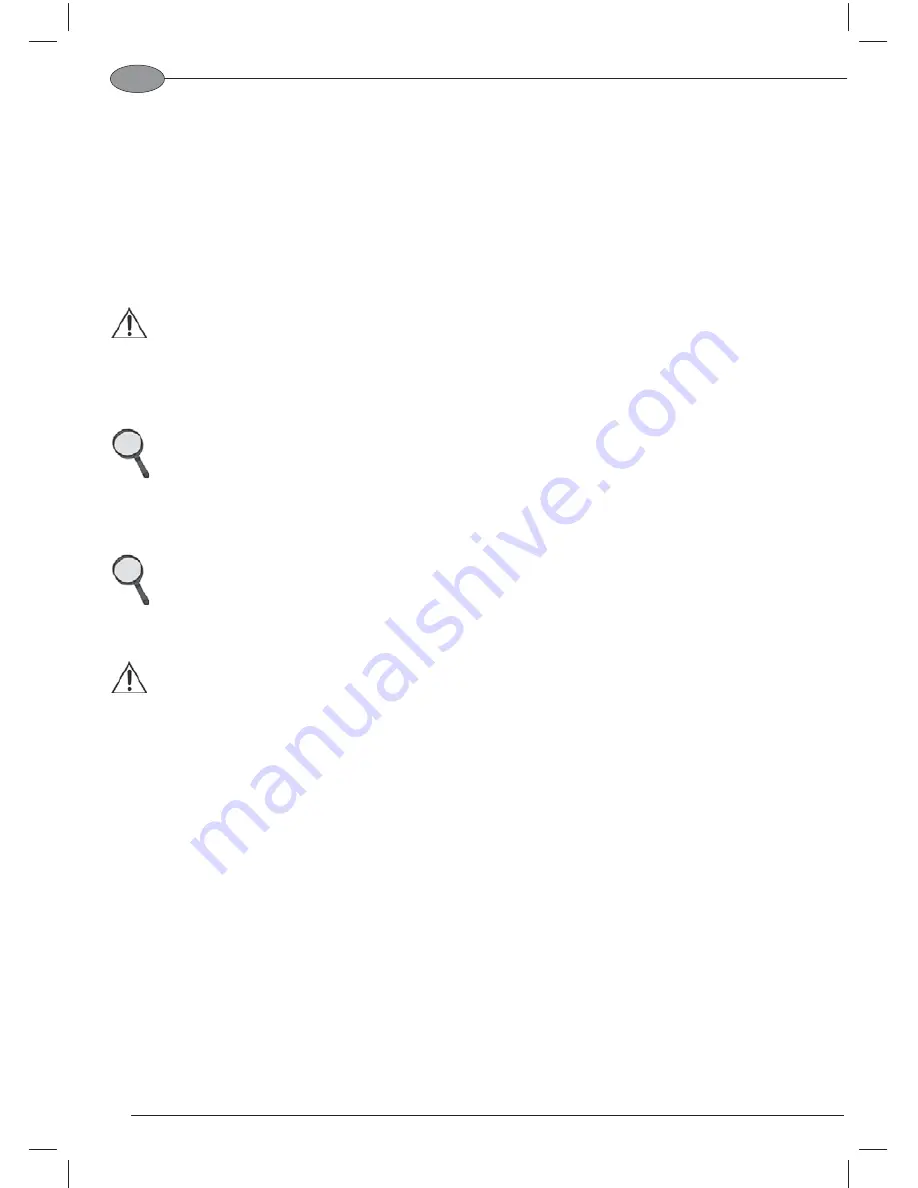
c. Turn the handwheel (21) anticlockwise to facilitate removal of the blade.
d. First extract the blade from the pulleys and then from the blade guide bearings.
e. Remove any work process debris using a small brush.
f. Install the new blade.
g. Make sure, by means of a visual inspection, that the blade is installed with the teeth pointing
in the direction indicated by the arrow on the machine;
h. Mount the safety guard by tightening the relative fi xing screws.
i. Turn the handwheel (21) clockwise up to the travel stop.
j. Run the blade in as described below.
DANGER - WARNING
TO GET OPTIMUM PERFORMANCE FROM YOUR BLADE, CARRY OUT THE
RUNNING-IN PROCEDURE.
k. Carry out three cuts, putting only a light pressure on the workpiece.
NOTES
Light pressure: as an example consider an operation to cut a full steel bar (e.g. C40, D.
50 mm). This should be carried out in about 4 minutes. Once the blade has been run in,
the same kind of workpiece can easily be cut out in about 2 minutes.
5.2.
LUBRICATION
NOTES
The machine does not need lubricating.
5.3.
CLEANING - TASKS TO BE PERFORMED
DANGER - WARNING
- WEAR SUITABLE PERSONAL PROTECTIVE EQUIPMENT (SAFETY GLASSES,
GLOVES AND MASK TO PROTECT THE AIRWAYS).
- AVOID USING JETS OF COMPRESSED AIR.
When necessary:
1) Remove any work residues from around the work area and surfaces using a small brush
or vacuum cleaner.
2) Dismantle and clean the extractor (optional)
Every day:
1) Remove any work residues and dust from the whole machine, including the power cable,
using a vacuum cleaner or a small brush.
Once a week:
1) Disconnect the exhaust fi lter or conduit and thoroughly clean the extractor (optional).
34
EN





